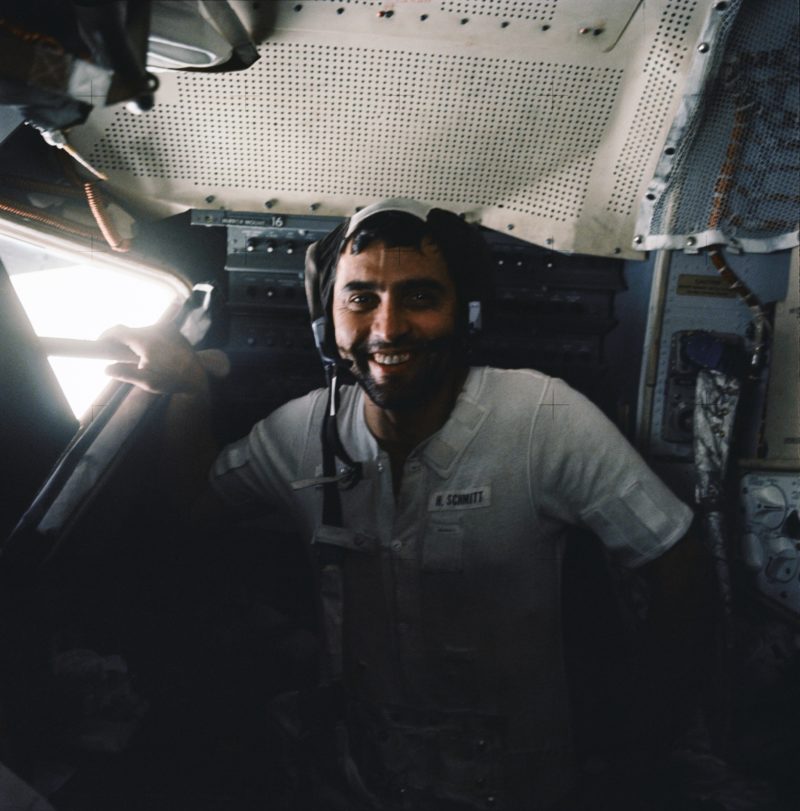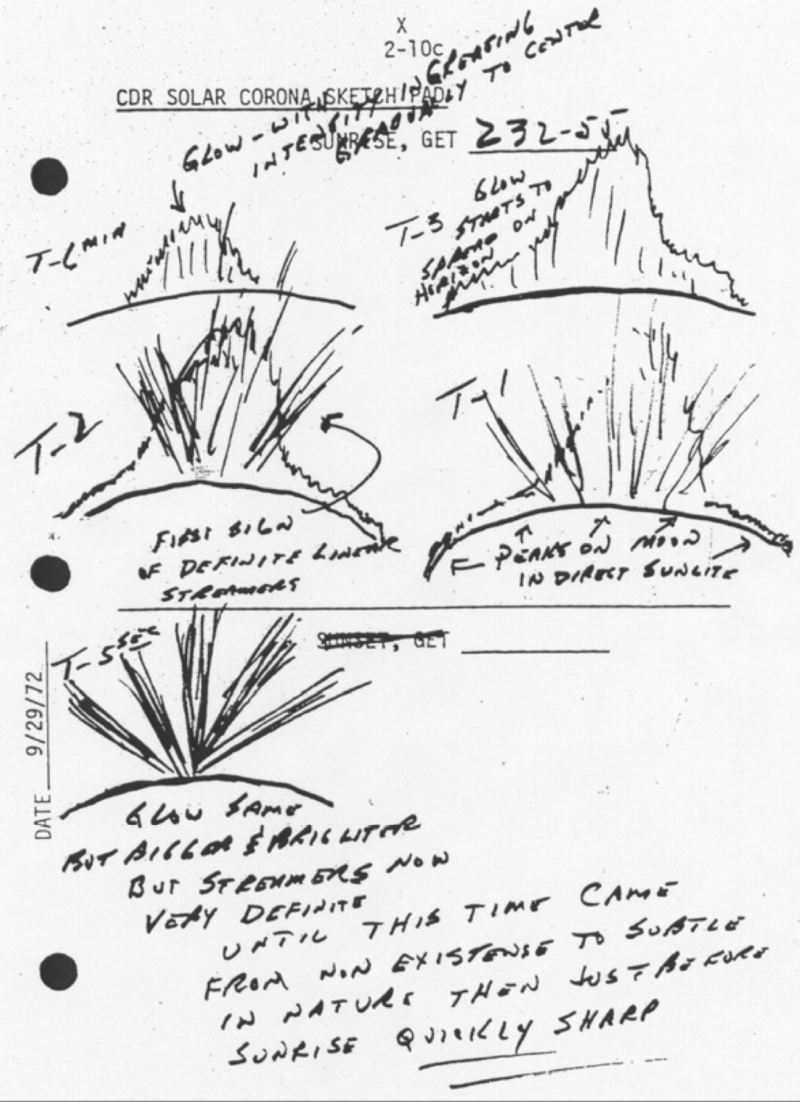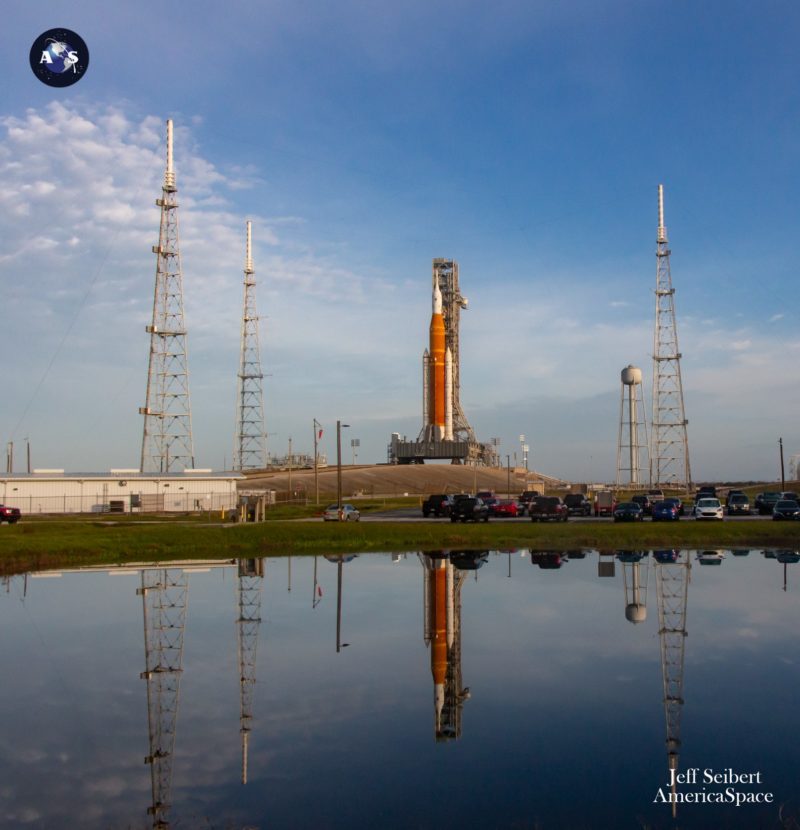
The first part of AmericaSpace’s in-depth story on the Artemis 2 science campaign, covering the status of the project, its leaders, and its contributions to the future of lunar science, can be found HERE.
During last December’s workshop on science objectives for Artemis 2, Noah Petro described four broad themes which he would like the mission’s crew to focus on during their lunar flyby. “There are still valuable things that can come from simple images taken by crew (with) well-calibrated cameras,” he remarked [1]. Notably, the current objectives differ from early presentations on what would become the Crew Lunar Observations (CLO) program. The initial public briefings focused on differences in brightness (albedo), which are mostly produced by recent asteroid impacts. However, the Lunar Reconnaissance Orbiter (LRO) team already used their spacecraft’s Wide Angle Camera to create a global map of albedo variations, which likely permitted Artemis 2 to focus on other goals. Petro’s candidate objectives are described below.


1. Color: Through Earth’s thick atmosphere, the Moon appears to have a bland color palette. However, Apollo astronauts and skilled astrophotographers have noticed that some regions on the Moon have subtle hues. “Every Apollo mission had a different take on what the color of the surface of the Moon was,” Petro noted [1]. For instance, the Moon’s flat, dark grey volcanic plains, known as maria (Latin for “seas”), can be tinted orange, tan, or blue depending on the amount of iron and titanium within the rocks. During the Apollo 17 mission, Jack Schmitt famously discovered orange beads of glass in a patch of lunar soil, which were produced by pyroclastic fountains of lava similar to the “fire fountains” produced by Hawaii’s Kilauea.


The human eye is more sensitive to variations in color than even the most sophisticated digital cameras. For our ancestors, observing a high dynamic range of colors and albedos at once could mean the difference between life and death, so over the past 500 million years, the evolutionary process has granted our eyes with remarkable capabilities. These masterpieces of biology produced unexpected scientific dividends during the Apollo era. As Apollo 17 raced away from the Moon, Gene Cernan, Jack Schmitt, and Ron Evans were treated to a view of the entire lunar near side. Schmitt used his training as a geologist to begin rattling off a nearly hour-long series of descriptions of lunar surface.
“Gordy (CapCom Gordon Fullerton), as we’re maneuvering, this is one of the most spectacular views that I’ve ever seen from a position like this!”, Schmitt remarked. “It’s just short of being 100% full. We can still see from Tsiolkovskii (Crater) all the way across the Moon. It’s just absolutely magnificent, and I’m afraid that the pictures just won’t capture the real three-dimensional picture we’re looking at.” By tracing subtle variations in color, he was able to distinguish individual lava flows within the maria. A year later, he published his observations at the annual Geological Society of America (GSA) conference. If it were not for Schmitt, we would not have learned about some of these boundaries until a team led by Harald Hiesinger spent over a decade counting craters to determine the ages of the rocks within the maria; their work was published in 2012.


Even today, mapping changes in color can provide hints about the compositions of features on the surface of the Moon. “Thanks to the Wide Angle Camera (on LRO), we have Hapke color parameters for the entire surface, so we have a sense of what we might expect (from LRO). But (when) we get the most sophisticated science experiment sent into space – a well-trained human eye – we will be able to verify and validate some of our assumptions about what the color of the far side of the Moon looks like,” Petro explained [1].
Color data, in turn, are valuable for understanding how Moon rocks formed, and hence how rocky planets evolve over time. During Artemis 2, Kelsey Young’s science team would like Reid Wiseman, Victor Glover, Christina Koch, and Jeremy Hansen to emulate Schmitt’s observations while they are over the far side of the Moon. Unlike the Apollo Hasselblad cameras, the Nikon Z9s inside Orion might also be able to detect subtle hints of color. This raises the possibility that lunar scientists will be able to empirically study the composition of features on the lunar far side using the crew’s photographs.


One issue with this plan is that handheld cameras are not typically calibrated. Calibration is irrelevant for recording family memories or capturing beautiful landscape photographs, but it is essential for scientific studies. On a basic level calibration entails photographing an object with a known color. This photograph, and all which follow, are adjusted to match the predetermined spectrum of the calibration target; as a result, the colors in the photographs will match the “true” colors which the astronauts see.
Without calibration, the photos from Artemis 2 will not be able to accurately unmask the mineralogy of the Moon. Calibrating the cameras would likely require the creation of a calibration target which would be placed inside Orion or on one of its solar panels. A sundial-shaped target was built for the Spirit, Opportunity, Curiosity, and Perseverance rovers and has proven invaluable on the surface of Mars. The Artemis Orbital Observation Workshop Report noted, “Imaging experts reported that the Nikon D5 DSLR can potentially be calibrated prior to flight, or in flight; however, there is no current requirement that the DSLR be radiometrically calibrated for Artemis II” [2]


2. Impact flashes: The Moon has a negligible atmosphere, and it is therefore incapable of stopping even the smallest incoming projectiles from hitting its surface. Over timescales of millions of years, the frequency of impact events is relatively constant. The ages of lunar craters and volcanic plains are calculated by counting the number of craters on a given surface and dividing that number by the average impact rate. If we are able to obtain better measurements of the current impact frequency, that will improve our understanding of the timeline of lunar history. Today, lunar impacts are detected by using telescopes and high-speed video cameras to look for the characteristic bright flash which is produced when a meteorite strikes the surface of the Moon. Notably, these observatories cannot see the far side of the Moon, which will be the focus of the Artemis 2 mission.
The Apollo crews visually observed three impact flashes during their flights. While their flyby will be relatively brief, the Artemis 2 astronauts will be trained to look for similar events. “On a short timescale, statistically speaking, it is not likely that you would be able to see some, but if you don’t look, you have no opportunity for discovery,” said Petro [1]. One suggestion which was raised during the Orbital Observation Science workshop was to program a Nikon camera to take a time lapse during the lunar flyby. This would ensure that the mission will document any transient impact flashes which occur. In the future, scientists hope to monitor impact flashes around the clock from the Gateway space station in lunar orbit. Since it is immune to poor weather and since it can also view the far side of the Moon, the Gateway will be an ideal platform for these observations.


3. Morphology and Stratigraphy: As it lacks plate tectonics, weather, and life, the Moon’s geology is drastically different from the surface of the Earth. Its surface has been shaped by countless impacts, which pulverize and excavate massive quantities of rock and spread it across hundreds, if not thousands, of miles. These impact blankets are layered atop one another in a complex and jumbled stratigraphy. Determining which layers are the oldest and which are the youngest is difficult, even with modern data.
The Sun rises and sets along the terminator, the boundary between the illuminated and shadowed portions of the lunar surface. At this location, the Sun casts long, stark shadows, making even small hills, depressions, and boundaries readily apparent. The unique lighting at the terminator can highlight small change in elevation, which could, in turn, denote the contacts between different geologic units. “There are going to be opportunities on Artemis 2 and subsequent missions to observe surfaces that have never been seen by humans before, and with that, we will be able to potentially unravel and identify interesting stratigraphic relationships (and) to identify unique morphologies,” said Petro [1]. Like the impact flash observations, studies of lunar stratigraphy could be significantly expanded once the Gateway is operational towards the end of this decade.


4. Lunar exosphere: During the Apollo program, multiple astronauts noticed a faint glow on the horizon as the Sun slipped behind the Moon. Apollo 17 Commander Gene Cernan created detailed drawings based on his observations. Apollo scientists explained the glow by hypothesizing that charged particles of dust might be lofted off of the lunar surface and incorporated into the Moon’s tenuous atmosphere (or exosphere, as it is technically known). However, when the Lunar Atmosphere and Dust Environment Explorer (LADEE) spacecraft attempted to confirm Worden and Cernan’s observations in 2013, its search came up empty.


The existence, or lack thereof, of the lunar exospheric dust cloud remains one of the most puzzling mysteries in lunar science. Either the Apollo astronauts were deceived by an optical illusion, or an unknown limitation prevented LADEE’s instruments from repeating the astronauts’ discovery. The Artemis 2 crew will see the Sun set behind the Moon once during the mission. Armed with knowledge about the Apollo and LADEE observations, they will attempt to determine which hypothesis is correct.
In addition to these four broad themes, Kelsey Young, Noah Petro, and their team would like the crew to image a handful of specific targets. These miscellaneous features of interest are subdivided into a handful of “investigations.” One will focus on the lunar far side’s unique volcanic features, which include the granite-rich domes at Compton-Belkovich and the compositionally distinctive center of the massive South Pole-Aitken Basin. Another will concentrate on tectonic features, such as faults and wrinkle ridges, which could disrupt the planned Artemis Base Camp if they are still producing Moonquakes today. A third investigation will focus on impact craters.


Artemis 2 will even impact the field of astronomy. From their unique vantage point, unimpeded by sunlight or the atmosphere, the astronauts will collect long-exposure photographs of Earth’s Lagrange points, which are locations in space where the gravitational forces of the Sun, Earth, and Moon balance out. Small objects can be trapped at the Lagrange points, indefinitely joining the Earth in its journey around the Sun. The Artemis 2 crew could attempt to photograph the Kordylewski clouds, which are faint concentrations of cometary dust hypothesized to exist at the Lagrange points. They might also search for “mini-moons,” small asteroids which orbit Earth at these locations.
The Artemis 2 observation campaign will continue to be refined over the coming months. This process will culminate in the release of a list of targets which the crew will attempt to photograph during their journey around the far side of the Moon. The specific identities of these targets will depend on how the Sun illuminates the Moon at the time of the flyby. Depending on when the mission launches, some features will be in sunlight, while others will be in darkness.


It is also unclear whether lunar scientists from outside of NASA will be able to participate in the mission. The inclusion of external scientists is standard protocol for robotic missions, as it enables the incorporation of a larger number of perspectives and viewpoints; however, the Artemis 2 science team has not disclosed whether their mission will follow this model. Finally, the Orbital Observation Science Report identified a handful of new pieces of hardware, such as a calibration target and a polarization filter for the Nikon cameras, which would need to be developed prior to the mission in order to maximize its science return. As with all missions, NASA will need to decide whether these enhancements are worth the effort required to field them.


It is important to remember that Artemis 2 is a test flight. The primary goal of Wiseman, Glover, Koch, and Hansen’s mission is to test the Orion spacecraft’s systems. However, if time permits, NASA’s lunar scientists also plan to keep the crew busy with a list of scientific observations. While their flyby will be shorter than future missions to lunar orbit or the lunar surface, they can still answer several important questions and lay the groundwork for future missions. Artemis 2 will improve our understanding of the Moon’s composition, its current impact rate, its stratigraphy, its tenuous exosphere, and more. By incorporating science into the Artemis program from the very beginning, NASA will fulfill the program’s enduring mission: to understand how planets evolve over time, and to learn why some worlds are dead while others are abodes for life.
“This is going to be a monumental event,” said Petro. “We will have stunning opportunities to see the far side of the Moon in ways that we were never able to do with Apollo. This really is the beginning of a new era of lunar exploration and a new view of the Moon.”
Follow AmericaSpace for space news, history, and more!
Missions » SLS » Artemis »
Posts associated with the SLS missions


